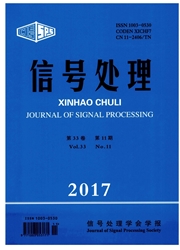

 中文摘要:
中文摘要:
本文主要研究了基于最小化均方误差和准则的MIMO放大转发双向中继信道中的波束成形向量(矩阵)的设计。我们分别在集中式与分布式两种应用环境中提出了一套解决方案。在集中式方案中,多个中继之间完全协作,因此将多个单天线中继等效成一个多天线的中继节点,设计了基于所有中继天线的总功率控制的波束成形向量(矩阵)。在分布式方案中,中继节点之间无协作,分别设计了基于所有中继总功率控制波束成形向量(矩阵)和基于单个中继功率控制的波束成形向量(矩阵)。仿真表明,通过波束成形设计,可以显著提高通信节点平均误码率。由于中继节点之间的完全协作,集中式方案要优于分布式方案。但是,由于中继结构简单,分布式方案更易于在实践中应用。
 英文摘要:
英文摘要:
In this paper,we design the beamforming in multiple-input multiple-output(MIMO) two-way relay channels to minimize the sum mean squared errors(SMSE).Two source nodes communicate to each other with the help of multiple relays each with a single antenna.A scheme for a centralized model and another scheme for distributed model are proposed,respectively.In the first scheme,relays are assumed to be able to fully cooperate with each other and the multiple relay nodes can be equivalent to a single relay with multiple antennas.Relay beamforming under total power constraint of all relays is unitedly designed with the transmit beamforming and the receive beamforming.In the second scheme,there are no cooperation between relay nodes,and beamforming schemes under relay total power constraint and individual power constraint are designed,respectively.The simulation results show that beamforming at source and relay nodes significantly improve the average bit error rate(BER) performance.Furthermore,with cooperation across different relays,the performance of the centralized scheme is better than the distributed one,but the latter one is much more practical because of the simple structure of the relay nodes.
 同期刊论文项目
同期刊论文项目
 同项目期刊论文
同项目期刊论文
 期刊信息
期刊信息
